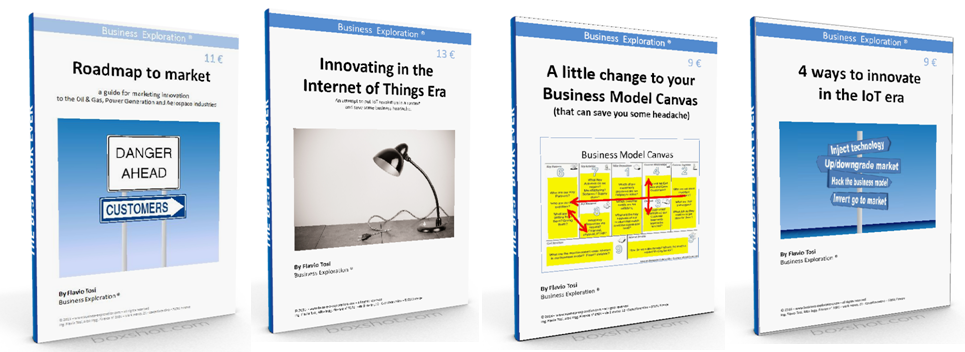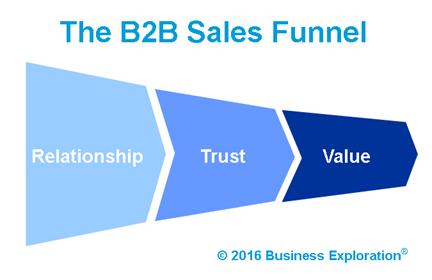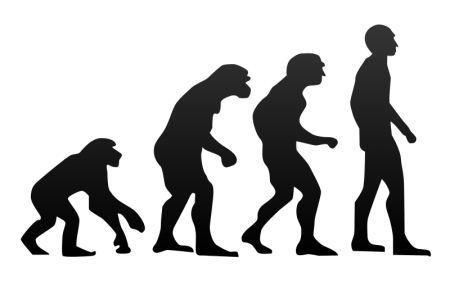
|
Contact: t: +44 7491 164 097 - e: info@business-exploration.com
www.business-exploration.com - P.I. 05998900483 - © 2016 - all rights reserved Office: via 8 marzo, 22 - 50051 - Castelfiorentino - Tuscany - Italy 16 Perham Road - W14 9ST - London - UK You can also find us c/o IF-Milano - Coworking space - via Torre, 29 - 20143 - Milano |
|
Read more about marketing innovation, ask our free booklets: here |

|
Business Crisis is embedded in our DNA. You can’t avoid these 4 moment of crisis, but you can manage them |
|
There are 4 times of crisis for any business: Modern human behavioral studies have identified critical step-changes in the way organization are managed when they reach the 30, 300 and 3000 units (1). These are time of crisis that require interdisciplinary wisdom and experience, that no software can solve, no pre-formatted schemas can fit-in. In these times of crisis we come in, bringing the human face of consulting: the ideas. Dear Fellow Innovator, There are 4 times of crisis for any business: 1) The “birth” 2) The “family” transition 3) The “clan” transition 4) The “legion” transition They reflect the ability of our brain to handle the complexity of managing an organization. The birth: Any good ideas needs to be helped structure itself and prove its value for the market. Today this critical phase of business organization has been well understood and clear methodologies have been defined to help structure business models in a safer, and less costly way. We practice them since 2010 and we have helped startups become realities using our 4 step methodology. We call it “the Roadmap to Market” and has proven effective in bringing innovation to the Healthcare, Fashion, Business Services, and Saas markets. The “family” transition: When a human organization reaches the 30 persons, the planning and execution of tasks can not be lead by a single person anymore. This is a time of crisis, where the only way out to a sustainable growth is to delegate. Build an organization around a core team of “owners” is something that requires a mix of instinct, trust and sound facts-checking practices. We coach you and your leadership team using the best Project Management practices, that we have used first hand on large industrial projects, small R&D product innovation projects and smart agile IT projects. We have summarized them in our book: “Manufacturing Project Management” and we teach them in our classes. The “Clan” transition If your organization has the ability to win market to grow up to 300 persons, you will start face a new challenge: the chocking of your span of control. This is the moment in time when the human brain faces its own limitation: recent studies have identified as 300 the max number of interactions that we can personally manage. Since 300 connections on, each “system”, “organization”, “tool” you add to your connection list requires that you eliminate an existing one. Do you want to add a new Client? You need to delete an old one. Do you want to add a new “software tool”? You need to delete a person or a tool on your list. This is the time when you start substituting your persons with processes. From 300 persons on, you need to rely on processes to manage your organization. Here you face a false choice: · go on the market and bring home pre-packaged solutions. · or design processes that are unique as unique is your company. We know by experience that this is a false choice. Going on the market for plug&play processes and tools is something that has a meaning only for companies that know their processes and want to carve out the max efficiency from them. But if you do not know your processes you need first of all to design build them. It’s a matter of to be effective. It’s something that requires a strong ability to model your business, map your critical decisions, align them to clear strategic goals and consolidate them with solid KPIs and rhythm. If you want to make this unique, you need a sound ability to handle try & error methodologies. We have mastered few of them in our R&D projects, Lean Six Sigma projects and Lean Startup projects and we can surely give you shortcuts to the goal. The “Legion” transition. You built a core team, delegating mechanisms, processes; you have been able to coordinate up to 3000 persons. The organization is almost a living being. Almost. All your efforts have created a team that is very good at responding to known challenges. The market ask, you replay. Effectively and efficiently. But if you want to continue to grow, your dimension becomes such that you are not “in” the market. You “are” the market. Your size affects the market behaviors. The only things that can disrupt your well oiled machine is a market change. If you are the market and something changes the market, it changes you. This is something that you can handle only anticipating the moves. You have to stop playing tactically and start playing strategically: collect strategic information, build scenarios, understand who are the players at the table and their ultimate goal. Build strategic reasoning into your organization is the final step and the one that assure your growth beyond the market. We can support you in building the key elements of a strategic planning process and also in supporting your decisions with dedicated strategic analysis that embed game theory and risk management best practices.
The four times of crisis are un-escapable, because are built in our DNA These 4 critical transitions are embedded in our DNA. You can question that the crisis does not comes at 30 but at 20, at 150 instead of 300, when it reaches 1000 instead of 3000. But the matter does not change. The Durban’s Numbers have been identified by the Anthropologist Robin Durban. He puts them in relation with the size of our neocortex size, the size of our brain. There is nothing that we can do about it if not to support it to overcome its limits. In any organization, overcoming these four critical times requires experience, know-how and ideas. We offer you the persons that can help you handle these transitions, because they not only have done it, but have also identified them and disassembled them into their critical pieces. Solving each one: 1. The Birth, with the use of Lean Startup and Go To Market methodologies 2. The Family, with the use of Project Management and Coaching methodologies 3. The Clan, with the use of Lean Six Sigma and Organizational models 4. The Legion, with the use of Strategic planning and Games’ theory approaches.
You can ask a Business Exploration professional and try our services at no cost, applying for our promotion “work for credits—first project free” or calling us at: +44 7491 164 097. Cordialmente Flavio Tosi Principal, Business Exploration® Copyright © 2016 Business Exploration© - All rights reserved.
——————————————————————- 1) we prefer to use 0,30,300,3000 as our “numbers” for memory sake. the size of a family - around 22 individuals - have been reported walking in the prehistoric times, as family group or hunting group. The size of a clan can be seen in Amazonian indigenous villages that have reportedly been counting around 300~400 persons, this is also the around the size of a full army company: 150~250 units. The size of a legion: a roman legion encompasses 10 cohorts for about 5000 units –when fully equipped -; a small rural town has something like 2500 units.
|



|
Puzzled by your Marketing Plan? |

|
Get our free booklet: Roadmap to Market
And discover our methodology
Satisfied or Reimbursed |
|
Our Newsletter reaches 2200 professionals in 47 nations, with the ambition to offer alternative points of view and a relax break to our readers. |


